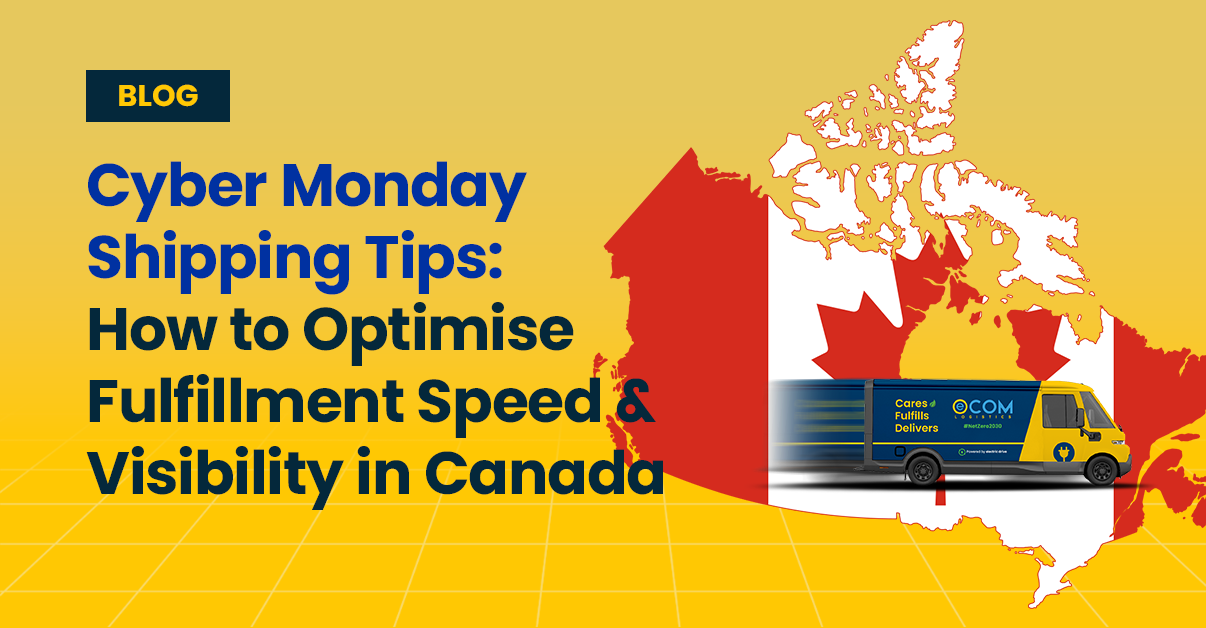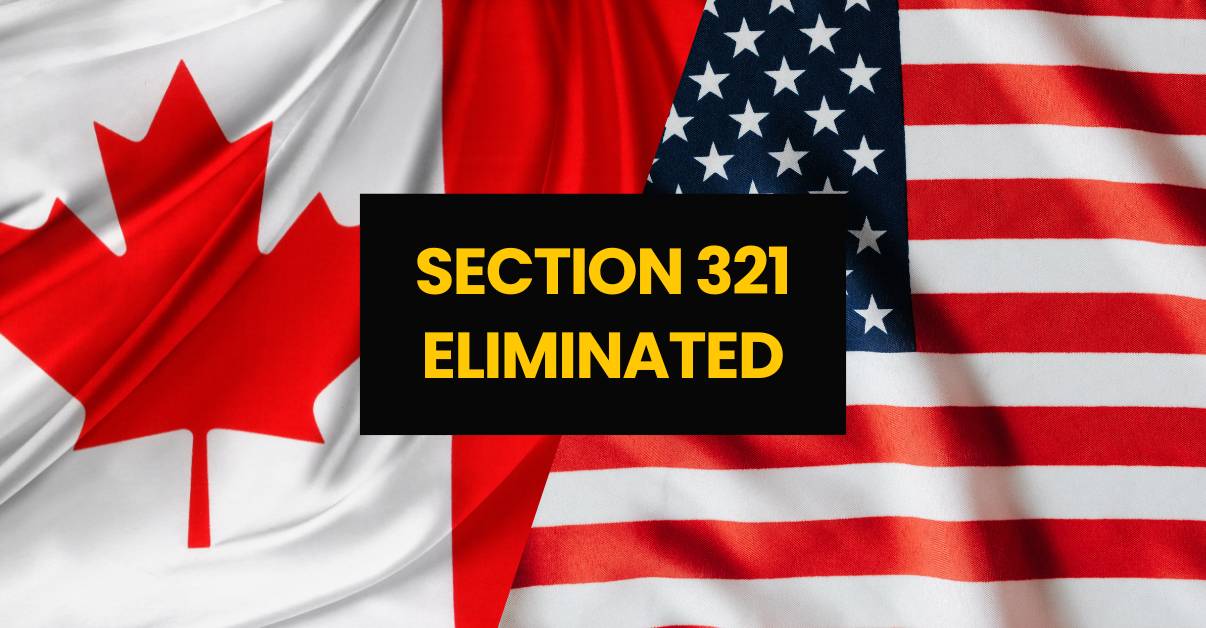As of February 1, 2025, the United States is set to impose a 25% tariff on Canadian imports—a move that could send shockwaves through Canada’s economy, particularly for e-commerce businesses that rely on U.S. sales. With close to $1 trillion CAD in annual trade between the two countries and 75% of Canada’s exports heading south, this new policy underscores a long-standing overdependence on the U.S. market.
For businesses engaged in cross-border trade, the challenge is clear: rising costs, tighter margins, and the urgent need to rethink pricing, logistics, and competitiveness. The question now is—how can Canadian businesses pivot to stay profitable in a shifting trade landscape?
A Look Back: Previous U.S. Tariffs on Canadian Goods
Historically, U.S.-Canada trade relations have seen fluctuations in tariff policies, particularly during periods of economic or political tension. Notable past trade measures include:
- 2018 Steel and Aluminum Tariffs: Under the Trump administration, the U.S. imposed tariffs of 25% and 10% on steel and aluminum respectively from Canada. These tariffs were lifted in 2019 following negotiations but caused temporary disruptions in supply chains.
- Softwood Lumber Disputes: The U.S. has significantly raised the duty on Canadian softwood lumber imports to 14.54%, up from the previous 8.05%. This has been a long-standing issue since 1982, with tariffs fluctuating over the years.
- Retaliatory Measures: In response to past U.S. tariffs, Canada imposed countermeasures on American goods, including levies on consumer products and raw materials.
These past tariff measures offer insights into how Canadian businesses might adjust strategies in the wake of the new 2025 tariff hikes.
Understanding the New Tariffs
Trade between Canada and the U.S. has long been supported by agreements like the United States-Mexico-Canada Agreement (USMCA), which promotes tariff-free exchanges. However, the newly announced 25% tariff on Canadian goods marks a significant shift, potentially disrupting industries and raising costs for businesses and consumers alike.
Key Sectors Affected by the Tariffs
1. Energy Products (Potential Exemption)
- Canada supplies over 60% of U.S. crude oil imports.
- If tariffs apply, gasoline prices could increase in both Canada and the U.S., with crude oil prices potentially rising from $63 per barrel to $80.
- Potential Exemption: As of January 30, 2025, the U.S. is still considering excluding Canadian oil imports from tariffs.
Why it matters: While this sector may be spared, uncertainty remains. Higher energy costs could increase transportation and logistics expenses, affecting shipping rates for e-commerce and supply chains.
2. Automotive Industry
- The North American auto sector is highly integrated, with over $110 billion in bilateral trade in 2023.
- Tariffs on Canadian auto parts could raise U.S. vehicle prices by up to $3,000.
Why it matters: This could lower demand for Canadian-made auto parts, potentially leading to job losses in Canada’s manufacturing sector.
3. Agricultural Products & Food Exports
- Key Canadian exports impacted include: Baked goods, cereals, pasta, vegetable oils, beef products, live animals, chocolate, and grain products.
- Canadian food exporters will adjust pricing to stay competitive, which could result in higher consumer costs.
Why it matters: If U.S. imports of Canadian agricultural goods decline, Canadian farmers and food producers could face oversupply issues, leading to revenue losses.
4. Industrial Supplies (Steel & Aluminum)
- The tariffs will affect Canadian steel, aluminum, and other raw materials, which are critical to U.S. manufacturing.
- Canadian e-commerce businesses that depend on these materials for products like electronics, home goods, and machinery could see higher costs.
Why it matters: Increased costs could make Canadian-made goods less competitive, potentially causing job losses and business closures in the manufacturing sector.

How Will This Affect Canadians?
- Higher prices: Tariffs will increase costs for businesses, which may pass them down to consumers.
- Job losses: Sectors like automotive, agriculture, and manufacturing could see reduced U.S. demand, impacting employment.
- Economic slowdown: Analysts estimate a 2.5% decline in Canada’s GDP by 2026, with inflation potentially rising to 7.2% and unemployment reaching 7.9%.
- Business uncertainty: Companies may need to adjust supply chains, seek new markets, or cut costs, making operations more challenging.
What’s Next?
The Canadian government is considering retaliatory measures, such as imposing tariffs on U.S. imports. However, this could further escalate trade tensions, impacting businesses on both sides of the border. As negotiations continue, Canadian businesses and consumers should prepare for potential disruptions and cost increases in the coming months.
While the full impact is still unfolding, these tariffs could significantly disrupt Canadian industries, leading to higher prices, job losses, and supply chain challenges for businesses and consumers alike.
What the New 25% Tariff Means for Canadian E-Commerce Businesses
Under the current Section 321 provision, Canadian businesses have benefited from duty-free entry into the U.S. for shipments valued at $800 or less. This has been a key advantage for e-commerce sellers, enabling them to compete effectively in the U.S. market without added costs.
However, with the new 25% tariff set to take effect on February 1, 2025, all Canadian imports—including those previously exempt under Section 321—will now be subject to the tariff. This means e-commerce businesses that relied on cost-efficient, duty-free shipping to U.S. customers will see a sharp rise in costs.
Key Impacts for E-Commerce Business Owners
1. Higher Costs for Cross-Border Sales
- Canadian e-commerce businesses exporting to the U.S. will pay an additional 25% on their goods, making products more expensive for American buyers.
- Companies relying on low-margin products may struggle to absorb these costs without significant price hikes.
2. Reduced Competitiveness in the U.S. Market
- Canadian businesses will find it harder to compete with domestic U.S. sellers, who won’t face the same tariff burden.
- Various e-commerce platforms may see price-sensitive U.S. customers favoring local alternatives.
3. Disruptions in Supply Chains & Fulfillment Costs
- Tariffs will increase the cost of importing raw materials for Canadian businesses that rely on U.S. suppliers.
- Warehousing and fulfillment strategies may need to be revised, with businesses exploring U.S.-based fulfillment centers to avoid cross-border tariffs.
4. Strain on Small and Medium-Sized E-Commerce Businesses
- Larger companies may negotiate better bulk shipping rates or shift fulfillment strategies, but smaller businesses will have fewer options to offset costs.
- Section 321 Exemption removal means even businesses that relied on de minimis shipping (under $800 per order) will no longer be exempt from tariffs.
5. Potential Consumer Backlash & Demand Decline
- Higher product prices due to tariffs may drive U.S. customers away from Canadian brands.
- If consumers opt for U.S.-based competitors, sales volumes could drop significantly for Canadian businesses.
6. Increased Business Costs & Profitability Challenges
- Companies may need to adjust pricing strategies or find alternative logistics solutions to remain profitable.
- Marketing and advertising costs may increase as businesses fight harder for U.S. market share despite price hikes.
7. Need for Market Diversification
- Canadian sellers will need to explore other markets like Europe, Australia, and Asia to reduce dependency on U.S. sales.
- Expansion requires new distribution networks, compliance with international trade laws, and currency exchange considerations.
8. Inflationary Pressure in Canada
- If businesses increase domestic prices to offset U.S. sales losses, Canadian consumers will also pay more.
- Possible job losses in manufacturing, logistics, and e-commerce due to declining exports.
What Should E-Commerce Sellers Do?
- Review pricing and profit margins to accommodate tariff-related costs.
- Seek alternative suppliers or explore regional trade agreements.
- Expand into non-U.S. markets to reduce over dependency.
- Monitor government responses and potential trade negotiations.
Conclusion
The new 25% U.S. tariff on Canadian imports presents a significant challenge for Canadian e-commerce businesses, affecting pricing, supply chains, and consumer behavior. Immediate action is required for businesses to remain competitive.
Key takeaways:
- Adjust pricing and supply chain strategies before tariffs take effect.
- Communicate transparently with U.S. customers about potential price increases.
- Explore alternative sourcing, warehousing, and distribution options.
- Stay informed about policy changes and advocate for industry support.
By implementing these strategies, Canadian businesses can deal with the challenges posed by the new tariffs while maintaining operational resilience and profitability.
About Ecom Logistics
Ecom Logistics is a trusted partner for warehousing, fulfillment, and last-mile delivery solutions that help e-commerce businesses navigate supply chain complexities. Our advanced logistics infrastructure ensures seamless operations while staying compliant with evolving trade regulations. Whether you need reliable fulfillment, inventory management, or shipping solutions, we are always here to support your business. Contact us to know more.
Frequently asked questions
1. How will U.S. tariffs on Canadian goods affect e-commerce pricing?
Tariffs will likely increase the overall cost of goods sold to U.S. customers, as businesses may need to raise prices to offset additional import duties. This could impact competitiveness, especially for price-sensitive markets. Canadian e-commerce businesses should consider adjusting pricing strategies, optimizing supply chains, or absorbing some costs to maintain customer loyalty.
2. What Canadian products are impacted by the new U.S. tariffs?
The specific products affected depend on the tariff list released by the U.S. government. Historically, tariffs have targeted industries such as manufacturing, agriculture, raw materials, and consumer goods. Canadian businesses should review the official tariff announcements and assess whether their products fall under the affected categories.
3. Will shipping costs increase for Canadian businesses selling to U.S. customers?
While tariffs themselves don’t directly impact shipping rates, they do increase the total landed cost of goods. If demand decreases due to higher prices, carriers may adjust pricing based on shipping volume. Additionally, customs clearance delays due to new tariff regulations could impact delivery timelines, making fulfillment more complex.
4. How can Canadian e-commerce businesses mitigate the impact of U.S. tariffs?
Businesses can explore several strategies, including:
- Sourcing materials or manufacturing from non-tariffed countries to reduce exposure.
- Re-evaluating pricing and margins to remain competitive.
- Exploring trade agreements or exemptions that might apply to their goods.
Optimizing logistics and supply chains to reduce costs in other areas, such as warehousing or last-mile delivery.




